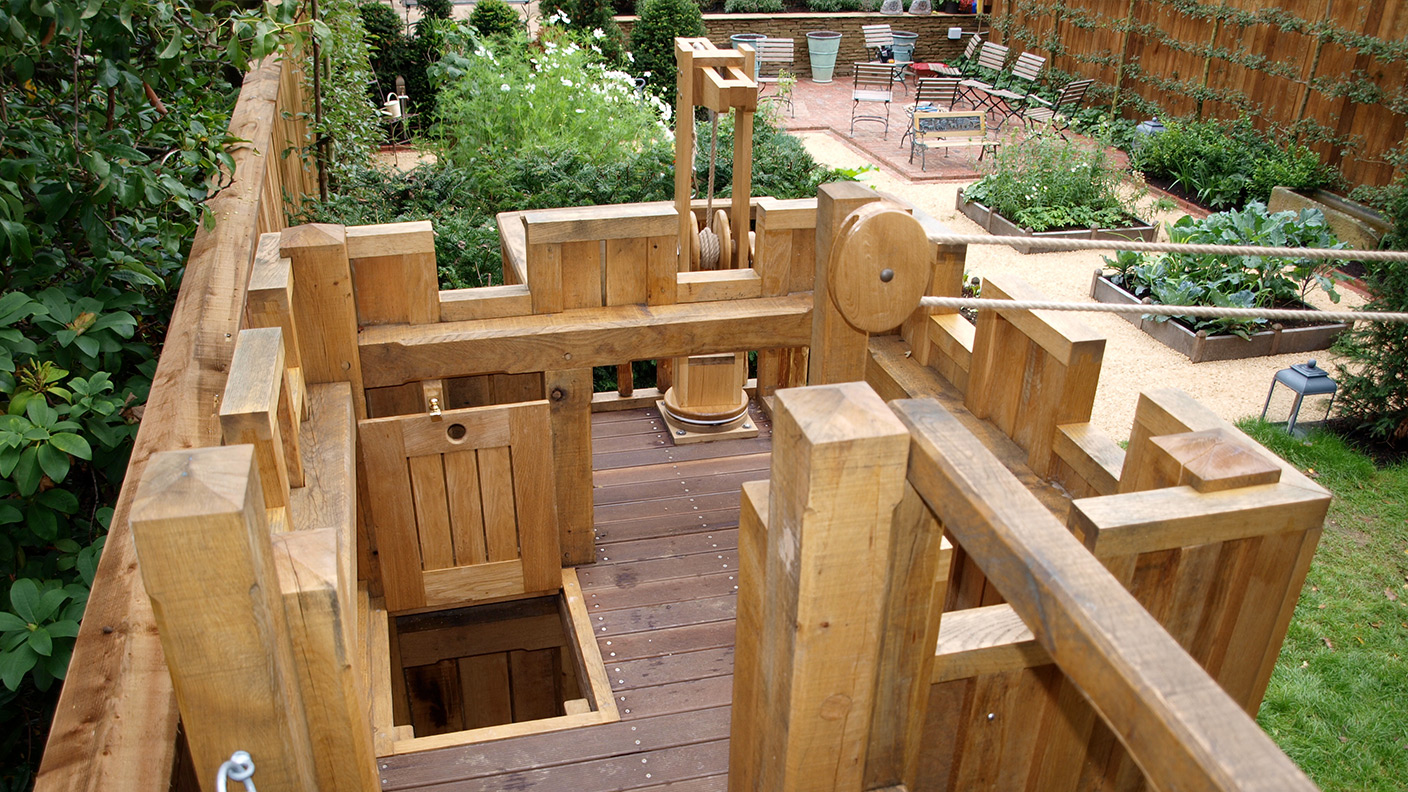Our approach to the project was to look and reference the gardens and architecture at Wrest Park, producing a scheme that fitted sympathetically and sensitively with the Estate, whilst paying homage to the history and aesthetic of its architecture and the beautifully preserved 17th century gardens.
Based on architectural features found in or derived from the Archer Pavilion, the centrepiece of the playground, we created a simple classical style. We imagined how the required equipment would be made in sections of oak, allowing the material to show its properties through the formal mouldings and decoration. We made a feature of the safety surfacing with its varying dimensions by designing it into the simple geometrical, formal landscaping. Other elements in the gardens are reflected, like the mythical beasts and statue plinths. We wanted to avoid making miniature versions or a direct parody of the garden.
The gardens and architecture at Wrest Park represent many different ages and styles, as each century different designers, artists, architects and craftsman made their mark. We see the play garden as a continuation of that tradition; as another landscaped garden with sight lines; partitioned areas, architecture, statuary; and also as a consistent addition to the overall estate.
The playground encourages children to see the formal architectural structures through the equipment’s outlines, suggestions and negative spaces and to discover the garden referenced in it’s details, formal layout and landscaping.
Relying on our background in vernacular, architectural restoration, traditional timber craft and framing techniques and by utilising sustainable timbers such as oak, chestnut and larch, we enable children to gain an understanding of English craft, providing both a passive and constructive learning experience.
Wrest Park is now one of English Heritage's most visited locations.





